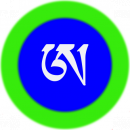So there are various meditation objects for developing concentration. The breath, a mantra, some form of visualization, and much more. |
|
Results 1 to 10 of 10
Hybrid View
-
05-28-2016 08:36 PM #1Member


- Join Date
- May 2016
- Posts
- 10
- Likes
- 0
What meditation object do you think is best for lucid dreaming?
-
05-28-2016 10:07 PM #2Traveler Between Worlds Achievements:








- Join Date
- Oct 2011
- Gender

- Location
- Florida
- Posts
- 277
- Likes
- 527
- DJ Entries
- 259
In the book "Dreaming Yourself Awake" the author B. Alan Wallace suggests the Shamatha practice of "Settling the mind in its natural state" as one of the best foundational meditations for lucid dreaming. To initiate the practice, he suggests starting with body scans, then settling the breath, then mindfulness of breath for `21 counts or so. Next comes the main practice of: holding awareness on the 'space of the mind' and whatever phenomenon enter with a detached perspective.
I believe the main idea with this approach is to develop a heightened awareness of your relationship with the reality you are experiencing.
This is a great application of concentration meditation as it incorporates elements of self-awareness.
-
05-28-2016 10:23 PM #3Member



- Join Date
- Feb 2015
- LD Count
- 6 in 2016
- Location
- French Guiana - Auberge du Mahury
- Posts
- 76
- Likes
- 58
I was thinking, maybe there should be no difference between "meditation for lucid dreaming" and WILD. If I have time for a sitting meditation, why not lay down and make a wild. It is meditation, directly focused for lucid dreaming. We know that unsuccessful wild's increase the chance for DILD. On the other way it looks like the "active meditation" (mindfulness) is more efficient for inducing lucid dreams. I am planing to start again with lucid dreaming. Meditation and mindfulness. In practice: WILD and as many time possible being in the here and now, without thinking, just beeing in the pure: I AM.
"There is only one knowledge, the remaining is only a patch: Earth is below you, sky is above you, and the ladder is in you."
(Weöres Sándor)
-
08-04-2016 04:16 PM #4Lurker

- Join Date
- Aug 2016
- Posts
- 4
- Likes
- 1
the AUM mantra if done correctly or yogic breathing techniques. More or less I see them both as the same though I doubt you will get decent explanations on the web, might be wrong though.
-
08-14-2016 02:48 AM #5
In the book 'the Tibetan yogas of dream and sleep' it is suggested that one uses the Tibetan "A" as ones point of focus.
For more details on the Zhine meditation method. - Zhine Tibetan Dream Yoga"Parable.- Those thinkers in whom all stars move in cyclic orbits are not the most profound: whoever looks into himself as into vast space and carries galaxies in himself also knows how irregular all galaxies are; they lead into the chaos and labyrinth of existence."- Friedrich Nietzsche, the gay science, First published in 1882 revised in 1887, translated by Walter Kaufmann [/SIGPIC]
-
09-02-2016 09:21 AM #6Member Achievements:



- Join Date
- Oct 2015
- Location
- Helsinki
- Posts
- 6
- Likes
- 5
I wouldn't actually say that the walking meditation is best for lucid dreaming, but it seems that over 50% of the times I do get lucid in a dream is when I notice that I'm walking. There's even no clear dream sign in my walking, though it could be that I move a bit too slow or float a bit while walking in dream. The percent seems to go up after every retreat I attend. I do about 5-6 hours of walking meditation per day in my retreats.
-
09-14-2016 03:52 PM #7Moderator

 Achievements:
Achievements:








- Join Date
- Sep 2013
- LD Count
- 327
- Location
- The Present Moment
- Posts
- 5,456
- Likes
- 6944
- DJ Entries
- 960
I think the best meditation for lucid dreaming is maintaining mindfulness during everyday, complex waking life experiences. In dreams, we do not sit or lie quietly in a room with only our thoughts for company. We are usually active in the dream world, interacting with objects and beings, noticing things moving into and out of our visual field, feeling emotions and reacting to our experiences. We are "living" just like (or similar to) we do in the waking state. In "The Tibetan Yogas of Dream and Sleep," Tenzin Wangyal Rinpoche writes:
In other words, in order to get lucid in dreams (regularly), we must first master awareness in the first moment of experience and response to experience! We must practice this while awake."This is the sequence: awareness in the first moment of experience, in response, in dream, ..."
Rinpoche continues:
I believe this, right here, is the crux of lucid dreaming practice.One cannot just start at the end. You can determine for yourself how mature your practice is: as you encounter the phenomena of experience, examine your feelings and your reactions to the feelings. Are you controlled by your interactions with the objects of experience or do you control your reaction to them? ... can you remain in steady presence in diverse situations?
Sitting mindfulness meditation (I prefer open eyed, with visual input, not sitting stock still or focusing only on a single object, but looking around experiencing my environment) can be helpful to get started. Start in a quiet location, like on a bench in park (there's still usually plenty of activity if you open yourself to experiencing it!) Then gradually move up to more and more complex, hustling & bustling environments as you master remaining mindful in relatively quiet situations.Last edited by FryingMan; 09-14-2016 at 03:57 PM.
FryingMan's Unified Theory of Lucid Dreaming: Pay Attention, Reflect, Recall -- Both Day and Night[link]
FryingMan's Dream Recall Tips -- Awesome Links
“No amount of security is worth the suffering of a mediocre life chained to a routine that has killed your dreams.”
"...develop stability in awareness and your dreams will change in extraordinary ways" -- TYoDaS
-
11-15-2016 10:38 PM #8
I'm sure you're right on that FM. I know that virtually all my non-lucid dreams are frenetic and active, and just like in WL, I'm totally focused on the events in front of me. I have enough difficulty stopping to realize I might be dreaming in WL, let alone while dreaming.
I guess a useful meditation object would be learning to "stand and stare" (if you know the poem), that is, to break off from the bustle of living in the moment and stopping to notice.
I guess being really busy in WL and not giving yourself a chance to stop is going to make your subconscious do the same?
-
09-14-2016 06:26 PM #9Member Achievements:






- Join Date
- Jan 2010
- Location
- Malmö
- Posts
- 1,579
- Likes
- 1483
The Present Moment

Simply remind yourself daily to focus on the now.
When the now is your predominant focus there will be no need for reality checks anymore, because you no longer have to be aware of the dream, you just are awareness itself. What is there to observe IN the NOW? That's the practise...
Last edited by MasterMind; 09-14-2016 at 06:33 PM.

-
11-25-2016 02:23 AM #10Deep Diving Dreamer Achievements:










- Join Date
- Oct 2010
- LD Count
- 50+
- Gender

- Posts
- 437
- Likes
- 343
- DJ Entries
- 92
Read the book "The Power of Now" couple of times by Eckhart Tolle =]
Similar Threads
-
Meditation for lucid dreaming?
By mimihigurashi in forum Attaining LucidityReplies: 28Last Post: 10-14-2014, 08:12 PM -
Lucid Dreaming + Meditation
By tranquilitybytrey in forum Lucid ExperiencesReplies: 1Last Post: 04-19-2009, 11:21 PM -
Meditation and Lucid Dreaming
By Silence Dogood in forum General Lucid DiscussionReplies: 2Last Post: 12-19-2008, 03:07 AM -
Lucid Dreaming And Meditation
By Waldo the 5th in forum Introduction ZoneReplies: 2Last Post: 11-15-2008, 12:13 AM -
Meditation and Lucid Dreaming
By Goldy in forum General Lucid DiscussionReplies: 10Last Post: 11-04-2008, 11:48 PM




 13Likes
13Likes
 LinkBack URL
LinkBack URL About LinkBacks
About LinkBacks




 Reply With Quote
Reply With Quote


Bookmarks